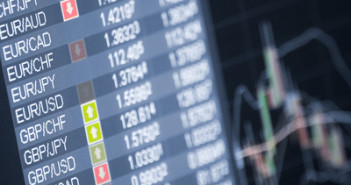It’s New Year’s Eve’s Eve, and we can already hear the corks popping in the financial markets. Bolstered by evidence that growth is accelerating across the global economy, investors are moving money off the sidelines to minimize upside risk. The influx of capital is smashing records on many equity bourses, driving the benchmark S&P 500 index to a 29% annual gain. Volatility expectations have plunged, with the VIX “fear gauge†falling by almost a third since January. Crude oil is trading above $100 a barrel, as the commodity complex sees strong bullish interest after taking heavy losses for much of the year.
Currency markets are moving in a much more nuanced manner.
The dollar is trading near a five year high against the yen, but is losing ground against the euro and sterling as traders begin to work under the assumption that most of the good news has been priced into the outlook for the American economy. Last week’s increase in durable goods orders and stronger revision of third quarter GDP numbers drove an generalized upward reassessment of fourth quarter growth expectations, but also generated concern about whether this momentum will continue once seasonal inventories are drawn down.
In contrast, the euro is benefitting from pre-emptive investment flows, rising as asset managers position ahead of an expected boost in growth. After undergoing a drastic deleveraging cycle over the past five years, the common currency area is posting ever-stronger trade surplus numbers while demand is falling for safe haven assets like the German bund. 1.40 beckons, although a move to that level would portend a loss in global competitiveness – meaning that traders are likely to position for a reversal in the coming months.
The yen continues to plummet, diluted by the Bank of Japan’s quantitative easing programme. With yields nearing negative territory and more stimulus evidently on the way in the year ahead, the currency has become a funding vehicle of choice for investors looking to place funds overseas. The next critical resistance threshold is marked at 110, but the journey could get bumpy as participants keep a wary eye on unevenly distributed price pressures in the Japanese economy.
This widespread sense of optimism is not percolating into commodity-linked currencies like the Canadian and Australian dollars. Both units are plumbing multi-year lows despite secular factors that have historically translated into an improvement in demand for raw materials. Instead, traders believe that both economies will continue underperforming their more competitive counterparts, and continue to shift money into alternative jurisdictions. Both face significant headwinds ahead, with the Canadian dollar particularly vulnerable as the spring thaw approaches.
Through the coming week, many of these fundamentals are likely to remain in place, with one important difference – after the ball drops in Times Square, many participants will switch from position-squaring to position-taking. The volatility-flattening effect that has been evident over the last fortnight may give way to a number of abrupt adjustments as capital flows back into the markets.
In particular, Thursday’s Institute of Supply Management Manufacturing Index release also looms as a potential trigger for movement. After November’s blockbuster result, expectations have coalesced around a slightly weaker number ahead of the typical post-holiday slowdown. A print above 56 would whet risk appetites, while a disappointment could put markets into a more cautious stance through the first week of the new year.
Further reading:
USD/CAD: Outlook Remains Higher, Eyes The 1.0736/50 Level
EUR/USD Dec. 30 – Euro Starts Week Above 1.37



